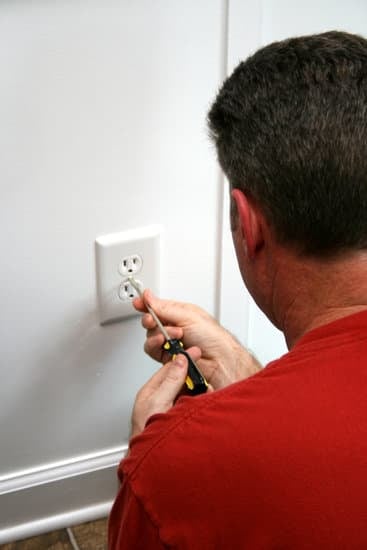Are home improvement businesses price takers in the industry? In the competitive world of home improvement services, companies are constantly evaluating their pricing strategies to stay ahead of the competition. This article will delve into the complex nature of pricing in the home improvement industry, exploring the various factors that influence pricing decisions and how businesses can navigate these challenges.
The home improvement industry encompasses a wide range of services, from renovations and remodeling to landscaping and interior design. With such diversity comes intense competition, as businesses vie for market share and customer attention. This competitive landscape has a significant impact on how prices are determined and perceived in the industry.
Material costs, labor costs, and external economic factors all play a role in shaping pricing strategies within the home improvement industry. Additionally, market demand and consumer behavior exert influence on how businesses set their prices. By understanding these factors, companies can better position themselves in the market while meeting customer needs.
With this context in mind, it is clear that pricing decisions in the home improvement industry are multifaceted and dynamic. To truly understand the pricing dynamics at play, one must consider the impact of competition, customer expectations, regulations, and future trends on how businesses approach pricing. Through this exploration, we will gain valuable insights into how home improvement businesses operate within this challenging marketplace.
The Nature of the Home Improvement Industry
The home improvement industry encompasses a wide range of services and products aimed at enhancing and maintaining residential properties. From renovation and remodeling to landscaping and HVAC maintenance, the industry is diverse and competitive. Home improvement businesses offer essential services that cater to the needs of homeowners, making them an integral part of the housing market.
Diverse Range of Services
Home improvement businesses offer a plethora of services, including but not limited to, kitchen and bathroom remodeling, flooring installation, roofing and siding work, painting, landscaping, plumbing, electrical work, and general maintenance services. This diversity means that there are numerous niche markets within the industry.
Competitive Nature
The home improvement industry is highly competitive, with many small businesses competing for customers in local markets. Larger companies also play a significant role in the industry, offering a wider range of services and often benefiting from economies of scale. Additionally, due to relatively low barriers to entry, new businesses regularly enter the market. As a result, competition among home improvement businesses remains fierce.
In this context, are home improvement businesses price takers? The nature of the industry certainly suggests so – with countless options available for consumers and significant competition between businesses vying for their attention and patronage. The pricing decisions made by one business can directly impact its ability to compete with others in the market. Therefore, it’s crucial for home improvement businesses to carefully consider their pricing strategies in relation to market demands and competitive offerings.
Factors Influencing Pricing in the Home Improvement Industry
The home improvement industry is one that encompasses a wide range of services, including construction, remodeling, landscaping, and interior design. With such a diverse array of offerings, businesses operating in this industry face a competitive landscape that requires them to carefully consider their pricing strategies. In this section, we will delve into the various factors that influence pricing in the home improvement industry.
There are several key factors that impact the pricing decisions of home improvement businesses. Firstly, material costs and labor costs play a significant role in determining the price of services. Fluctuations in the prices of raw materials and availability of skilled labor can greatly affect the overall cost structure for businesses. Additionally, external economic factors such as inflation and interest rates also have an impact on pricing.
Moreover, market demand and consumer behavior are essential considerations for businesses when it comes to setting prices. Understanding the preferences and purchasing patterns of customers is crucial for determining the right pricing strategy. Additionally, competition within the industry also plays a pivotal role in influencing pricing decisions for home improvement businesses.
To navigate these challenges and make informed pricing decisions, it is important for businesses in the home improvement industry to carefully assess and analyze these factors. By understanding the dynamic nature of pricing influences, businesses can develop effective strategies to remain competitive and meet customer expectations while ensuring profitability.
- The ongoing changes in material costs due to economic instability
- The growing demand for eco-friendly materials
These are just some examples of how complex and multifaceted are price takers within the home improvement industry. This underlines why they need to carefully study these factors to ensure healthy business operations.
The Role of Competition
The home improvement industry is known for its highly competitive nature, with a wide range of businesses offering similar services to consumers. From general contractors and painters to landscapers and interior designers, there are numerous service providers vying for the attention of homeowners looking to improve their living spaces. This level of competition has a significant impact on the pricing strategies of home improvement businesses.
Impact of Competition on Pricing Strategies
In such a crowded market, home improvement businesses are often forced to be price takers, meaning they have little control over the prices they can charge for their services. Competitive pressure can drive prices down as businesses strive to undercut each other in order to win over customers. This can create a challenging environment for smaller or newer businesses trying to establish themselves in the industry.
On the other hand, larger and more established companies may have the advantage of economies of scale and brand recognition that allows them to command higher prices. They may also have the resources to invest in marketing and advertising efforts that help them stand out from their competitors. Overall, competition directly influences the pricing strategies employed by home improvement businesses, impacting both the pricing levels and the ability to differentiate themselves from others in the market.
Challenges and Opportunities Presented by Competition
The fierce competition within the home improvement industry poses both challenges and opportunities for businesses. On one hand, it forces companies to constantly innovate and improve their offerings in order to stay competitive. This can lead to better quality services and more value for customers. However, it also means that businesses must carefully analyze their pricing strategies in order to remain profitable while staying competitive.
Another challenge presented by competition is the potential race to the bottom in terms of pricing. When multiple businesses are vying for the same customers, there may be pressure to lower prices at the expense of profit margins. However, this can also create opportunities for savvy business owners who are able to create a unique value proposition that goes beyond just price, allowing them to stand out in a crowded market.
Ultimately, competition plays a significant role in shaping pricing strategies within the home improvement industry, presenting both obstacles and chances for growth and success.
The Influence of Customer Expectations
Customer expectations play a significant role in shaping the pricing strategies of home improvement businesses. The demands and preferences of customers can impact the way businesses price their products and services, as well as the overall customer experience. In the home improvement industry, where consumers seek personalized and high-quality services, understanding and meeting customer expectations is crucial for business success.
Factors that Influence Customer Expectations on Pricing:
- Quality of Work: Customers expect top-notch quality when it comes to home improvement projects. This can influence their willingness to pay a higher price for services that they perceive to be of superior quality.
- Customization: Homeowners often have specific needs and desires when it comes to renovation or remodeling projects. Meeting these custom requirements may lead to higher pricing but also satisfies customer expectations.
- Timeliness: Customers expect home improvement projects to be completed within agreed-upon timelines. Businesses that are able to deliver on time may have more flexibility in setting prices.
The Importance of Customer Satisfaction and Reputation:
Ensuring customer satisfaction and building a strong reputation is essential for home improvement businesses. Satisfied customers are more likely to recommend a business to others and become repeat customers themselves. Consequently, meeting or exceeding customer expectations can result in positive word-of-mouth referrals and ultimately contribute to the business’s long-term success.
In order to meet or exceed customer expectations, home improvement businesses must develop pricing strategies that align with the value they provide. Value-based pricing aims at capturing the perceived value of a service from the customer’s standpoint rather than basing it solely on costs. Understanding what customers value allows businesses to differentiate themselves from competitors while justifying their prices based on the unique benefits they offer.
Overall, customer expectations significantly impact how home improvement businesses set their prices. By understanding what customers want and delivering on those expectations, businesses can establish themselves as trusted providers in a competitive market landscape.
Pricing Strategies in the Home Improvement Industry
The home improvement industry encompasses a wide range of services, including renovations, repairs, and remodeling projects for residential and commercial properties. With such diversity comes intense competition, making it essential for businesses to implement effective pricing strategies to stand out in the market. In this section, we will delve into the various pricing strategies used by home improvement businesses, as well as the importance of value-based pricing and differentiation.
One of the critical factors influencing pricing in the home improvement industry is the cost of materials and labor. Businesses must carefully consider these costs when determining their pricing strategies. Additionally, external economic factors such as inflation and fluctuations in the housing market can also impact pricing decisions.
Value-based pricing is an essential strategy for home improvement businesses to consider. This approach focuses on setting prices based on the perceived value of the services provided rather than simply covering costs or undercutting competitors. By emphasizing the unique value they offer, businesses can justify higher prices to customers who prioritize quality and reliability.
Furthermore, differentiation plays a crucial role in setting businesses apart from their competitors. Whether it’s through innovative services, exceptional customer service, or specialized expertise, differentiation allows businesses to justify premium pricing while attracting customers who are willing to pay for superior quality. Ultimately, successful pricing strategies in the home improvement industry require a delicate balance between cost considerations, value perception, and differentiation.
| Pricing Factors | Importance |
|---|---|
| Material and labor costs | Key considerations for determining prices |
| Value-based pricing | Emphasizes perceived value over cost coverage |
| Differentiation | Allows justification for premium pricing |
The Impact of Regulations and Industry Standards
In the home improvement industry, businesses are subject to various regulations and industry standards that have a significant impact on their pricing strategies. These regulations are put in place to ensure the safety, quality, and ethical conduct of home improvement businesses, aiming to protect consumers and maintain industry integrity. Compliance with these regulations is not only a legal requirement but also crucial for maintaining a positive reputation and gaining consumer trust.
One of the key areas where regulations play a significant role is in the use of building materials and products. Many home improvement projects involve the use of specific materials that need to meet certain safety and quality standards.
For example, when it comes to construction projects, there are building codes and standards that dictate the types of materials that can be used for structural purposes. Additionally, environmental regulations may also impact the choices available to businesses as more environmentally friendly options become increasingly important to consumers.
Moreover, industry standards such as certifications, licenses, and permits also influence pricing in the home improvement sector. Obtaining these credentials often involves certain costs for businesses, which are inevitably factored into their overall pricing structure. Adhering to these industry standards not only adds legitimacy to a business but also assures customers of its competence and reliability. Therefore, compliance with both regulatory requirements and industry standards plays a vital role in determining the pricing strategies of home improvement businesses.
| Regulations | Industry Standards |
|---|---|
| Ensure safety, quality & ethical conduct | Certifications, licenses & permits add legitimacy |
| Influence material choices & environmental impact | Assure customers of competence & reliability |
| Impact overall pricing structure | Determine compliance costs for businesses |
The Future of Pricing in the Home Improvement Industry
The home improvement industry continues to experience significant changes in pricing dynamics as businesses navigate various factors that influence their ability to set prices. In this constantly evolving landscape, are home improvement businesses price takers, or do they have the power to influence and control their pricing strategies? As the industry moves forward, it is essential for businesses to analyze potential trends and changes in pricing dynamics to adapt and thrive in this competitive market.
One of the key factors that will shape the future of pricing in the home improvement industry is technological advancements. With the rise of digital solutions and innovative tools, businesses are presented with new opportunities to streamline their operations and enhance efficiency.
This can result in cost savings that may impact pricing strategies, allowing businesses to offer competitive rates while maintaining profitability. Additionally, technology also provides avenues for businesses to showcase their expertise and differentiate themselves in a crowded marketplace, which can influence how they position their pricing.
Furthermore, shifting consumer behavior and preferences will continue to impact pricing strategies within the home improvement industry. As customers become increasingly informed and discerning when making purchasing decisions, businesses will need to align their pricing with customer expectations. This includes not only competitive rates but also transparency in pricing structures and a focus on delivering value. Businesses that can effectively cater to these changing consumer demands will have an advantage in setting prices that resonate with their target market.
Regulatory changes and sustainability initiatives are also expected to play a significant role in shaping pricing strategies for home improvement businesses in the future. As environmental concerns become more prominent, there may be an increased emphasis on eco-friendly practices and materials within the industry. This could lead to shifts in material costs and regulations that impact overall pricing structures. Businesses will need to proactively adapt to these changes while maintaining compliance with evolving standards.
Ultimately, as the home improvement industry continues to evolve, businesses must closely monitor these factors influencing pricing dynamics and adjust their strategies accordingly. By staying agile and responsive to technological advancements, consumer behavior shifts, regulatory changes, and sustainability initiatives, home improvement businesses can position themselves as active influencers of their own pricing rather than passive price takers within this competitive landscape.
Conclusion
In conclusion, it is evident that home improvement businesses are not mere price takers in the industry. The diverse range of services offered, the competitive nature of the market, and various external factors all contribute to shaping pricing strategies within this sector. Factors such as material costs, labor costs, market demand, and consumer behavior all play a significant role in determining the pricing dynamics for home improvement businesses.
Furthermore, competition also has a substantial impact on pricing strategies within the home improvement industry. While it presents challenges, it also offers opportunities for businesses to differentiate themselves and offer value-based pricing to attract customers. Customer expectations and preferences also influence pricing decisions, highlighting the importance of customer satisfaction and reputation in this sector.
Looking ahead, it is important for home improvement businesses to adapt to potential trends and changes in pricing dynamics. Adhering to regulations and industry standards while exploring innovative pricing models will be crucial for their success in the future. Overall, while there are challenges present, home improvement businesses have the opportunity to leverage various factors to create unique pricing strategies that set them apart in the industry.

I’m thrilled to have you here as a part of the Remodeling Top community. This is where my journey as an architect and remodeling enthusiast intersects with your passion for transforming houses into dream homes.





